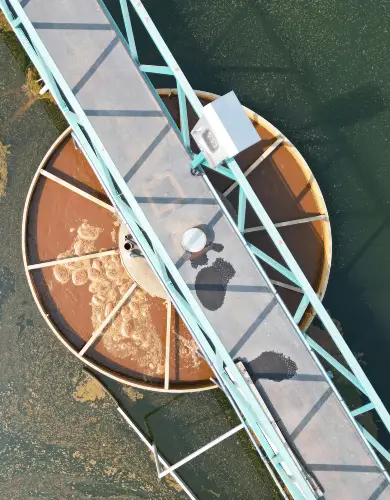New business energy connections
In the UK, the gas and electricity networks are accessible nationwide.
Despite recent advances in off-grid energy solutions, connecting to the grid remains the cheapest and most reliable method of supplying energy to a new property.
Our business energy experts provide a step-by-step guide to securing a gas and electricity supply for your business:
- Step 1: Review of technical requirements
- Step 2: Get permission from the local grid operator
- Step 3: Physically connect your property to the local grid
- Step 4: Business energy meter installations
- Step 5: Appointing a business energy supplier
Before proceeding with arranging your business energy connection, our guide begins with some fundamentals:
Assess your business energy needs
Before proceeding with arranging a business energy connection, it’s crucial to carefully consider alternative options.
All business energy connections require payment of a daily business energy standing charge as well as initial connection costs, so exploring other options could offer a cheaper and more environmentally friendly alternative.
Does your business need a gas supply?
Most commercial properties in the UK depend on a gas supply for their central heating systems. However, there are now modern options for central heating that don’t rely on a natural gas supply.
Opting for a heating system that does not rely on gas can save your business from incurring a gas standing charge and often eliminates the need to pay business gas rates altogether.
Here are the most popular options:
- Heat pump – An electrical device that heats water that is 300% more efficient than a gas boiler.
- Biomass boiler – A boiler that utilises wood pellets, offering a renewable and eco-friendly alternative to gas boilers.
💡 Local councils offer incentives for investing in green heating systems through business energy grants.
Suppliers such as FloGas can provide gas bottles or tanks, offering a flexible solution for occasional gas needs.
Does your business need an electricity supply?
Across the UK, businesses are increasingly investing in commercial solar panels and other micro-scale renewable resources to diminish their reliance on the grid.
Businesses can entirely avoid a business energy connection by combining a renewable business energy generation, a solar battery, and a backup diesel generator.
Consider our comprehensive guide to off-grid business energy for more detailed information.
💡 To sell excess generated green electricity back to the grid under the Smart Export Guarantee, businesses must maintain a business electricity connection.
What are new business energy connections?
Business energy connections can be categorised into two types. Let’s explore each one:
New business gas connection
Most areas in the UK are serviced by a natural gas pipeline infrastructure, managed either by a regional gas distribution network or an independent gas transporter.
These operators oversee a regional gas pipeline network that links all properties in the area to the national gas infrastructure.
Obtaining a new gas connection involves extending a pipe from the existing gas network directly to your property.
A gas meter is installed to accurately record the volume of gas your property consumes from the grid.
New business electricity connection
The electricity distribution network in the UK is segmented into regions managed by its own Distribution Network Operator (DNO).
These DNOs connect all properties within their area to the national grid.
Establishing a business electricity connection entails installing high-capacity electricity cable from the infrastructure managed by your DNO to your commercial property.
An electricity meter will be installed at the point where the line enters your property to measure the amount of power your property draws from the grid.
Step-by-step guide to getting a business energy connection
Arranging a new business energy connection can be a complex process. Unlike switching business energy suppliers, it necessitates physical installations of wires and pipes and involves coordination between several parties.
We recommend engaging a business energy connection firm (see below for our recommendations) to manage the new connection.
However, we have summarised the key steps:
Step 1: Review of technical requirements
It is essential to understand how your commercial property will use electricity and gas to ensure the capacity of the connection meets your needs.
Below are the minimum technical details required:
Business electricity connection specifications:
- Annual expected consumption – The amount of electricity you expect your property to consume yearly, measured in kWh. Refer to our guide for more information on business energy consumption.
- Electricity connection capacity (KVA) – The maximum power you expect to consume in any 30 minutes. For more information, here’s our guide to maximum demand.
Business gas connection specifications:
- Estimated annual consumption – The amount of gas you expect your property to consume annually, measured in kWh.
- Peak hourly load—The maximum flow of gas your business will require, depending on the gas-using compliances you plan to install. Peak hourly load is measured in cubic meters per hour.
Step 2: Get permission from the local DNO/Gas distribution network operator
To connect your business to the local electricity grid or gas network, you will need to gain permission from your local grid operator.
For both electricity and gas, these local networks are managed by private companies. These companies must assess your technical requirements against their grid’s capacity to ensure they can accommodate your connection.
You can contact your local grid operator, using Energy Networks postcode look-up service.
Upon approval of your request, the operator will issue you an MPAN (Meter Point Administration Number) for electricity or an MPRN (Meter Point Reference Number) for gas. These unique codes enable the network and your business energy supplier to identify your property’s new energy supply point.
Step 3: Physically connect your property to the local gas or electricity network
Arranging the new pipes and wires required to connect your commercial property to the existing network marks a complex phase in the process.
The physical connection encompasses several crucial steps:
- Conducting a technical design and Utility Risk Assessment that adheres to the relevant technical standards.
- Developing a coherent strategy for all your utility connections, including business water connections.
- Obtaining a quote from the local network operator for the connection up to the boundary of your property, in line with their connection charging methodology.
- Identifying and securing services from local utility companies with the necessary expertise to work on your property.
- Negotiating any issues related to leases, way leaves, and easements that may arise.
- Implementing project management to ensure effective collaboration among all parties involved.
- inspecting and testing the installed infrastructure to ensure it meets safety and operational standards.
Step 4: Business energy meter installations
You’ll need to appoint a Meter Operating Provider (MOP), an organisation that installs and maintains your business energy meter.
Arranging a new meter installation involves entering into a meter operator agreement.
Meter operator fees, typically billed separately from your business energy charges, cover the costs of maintenance and the communication services associated with electricity and gas meters.
The type of business energy meter installed will depend on the technical requirements of your connection and can be one of the following:
Step 5: Appointing a business energy supplier
To arrange payment for electricity and gas through your new business energy connection, appointing a supplier is necessary.
The business energy market offers a choice among over 50 different suppliers. To aid in this decision, consult our guides on the following:
Once you’ve appointed a supplier, your property’s MPAN and MPRN will be registered with your supplier, and they’ll start sending you business energy bills.
Choosing a business energy connection provider
The process of arranging a business energy connection involves several different parties, including:
- The electricity distribution network operator
- The gas distribution network operator
- The meter operating provider
- The business energy supplier
- The contractor to perform the groundwork
It is crucial that the activities of each of these parties are well-coordinated to ensure that your business energy connection is established on time.
Some business energy suppliers offer an end-to-end service to coordinate your grid connection.
Our business energy experts have compiled a list of the top suppliers currently providing this comprehensive service:
- Crown Energy – Specialists in assisting businesses with connecting their gas, electricity, and water under a single service.
- nPower Business – Offer business electricity connections in as little as five days.
- British Gas – Provides dedicated project managers for larger business connections.
Business energy connections – FAQ
Our business energy experts answer the frequently asked questions regarding new grid connections for commercial properties.
How long does it take to set up a new energy connection for my business?
The length of time needed to connect a new property to the local grid depends on:
- The availability of your local grid operators to review your application.
- The extent of groundwork required to lay new cables and pipes.
- The availability of local contractors to do the groundwork.
The industry standard for a new business energy connection is 15 to 20 days, but some providers claim to be able to achieve this in as little as five days.
How much does a new business energy connection cost?
The cost of a business energy connection will depend on:
- Site works required
- Specifications of required connection
- Distance from your property to the local grid.
- The local grid operator.
Once you’ve determined your requirements, we recommend requesting quotes from several connection providers.

